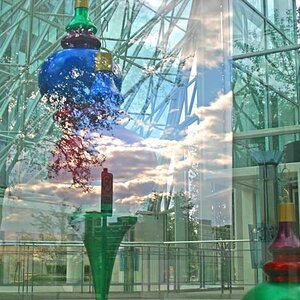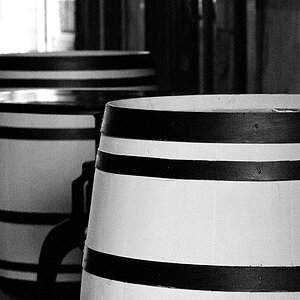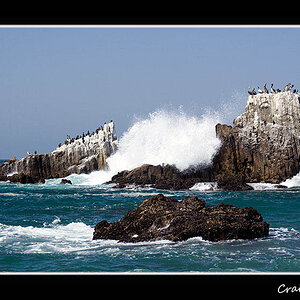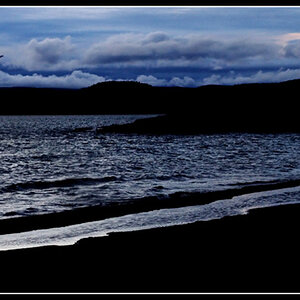Staaan
TPF Noob!
- Joined
- Jan 24, 2011
- Messages
- 7
- Reaction score
- 0
- Location
- Queens, New York
- Can others edit my Photos
- Photos OK to edit
Hey all..
I am brand spanking new to this forum.. and D-SLR photography.
I say new to D-SLR, because I do own a Canon Powershot 780IS, which is a tiny P&S...
What brings me to photography - My other hobby of keeping a Coral Reef Aquarium.
I am a poor college student and just like "reefing", photography and low income doesn't seem to co-exist very well.. but I am trying to make-do with what I can.
My father surprised me with quite an early birthday present (My birthday is in March) and bought me a Canon EOS Rebel T1i w/ 15-55mm EF-S IS Lens (seems to be the most common kit lens).
My favorite type of photography is macro (hence why I am posting in the macro forum; I do apologize if this is not the appropriate place for my post)
As I've been learning to take pictures with my camera, I am starting to notice that my lens is not really a "macro" lens and does not allow me to get very close-up to take pictures of my corals & fish.
I was speaking to my father and he told me back when he was younger and into photography, he used to use these extensions to achieve macro photography.
So I went on a search and found one at amazon. I would like to post the link, however the system tells me that I am required to have atleast 5+ posts in order to post a link. However the extension is called - "Fotodiox Canon EOS Macro Extension Tube Set Kit for Extreme Close-up, fits Canon EOS 1d,1ds,Mark II, III, IV, 5D, Mark II, 7D, 10D, 20D, 30D, 40D, 50D, 60D, Digital Rebel xt, xti, xs, xsi, t1i, t2i, 300D, 350D, 400D, 450D, 500D, 550D, 1000D" on Amazon.com
I read the reviews on amazon.. and I'm not entirely sure if they are reliable.
Does anyone happen to know if purchasing this extension will allow me to take some better macro shots?
Also, I was contemplating purchasing another lens (which I'm assuming should be a macro lens) after I get comfortable with my current equipment..
With my aforementioned "poorness" (lol), would there be any decent beginner macro lens or better yet "all-around" lens that could be purchased for around $150 - $200?
Another piece of a equipment I was looking to purchase was a protective filter and possibly some other interesting filters to give my photos an interesting effect. I was reading a reef keeping magazine article about macro photography and there was this type of filter that blocked a blue light (450nm wavelength light) a common light used in keeping reef aquariums to bring out coral color. Any way this filter that blocks blue light can help capture coral's luminescence in an interesting way..
Thanks for all tips, comments, advice, etc!
I am brand spanking new to this forum.. and D-SLR photography.
I say new to D-SLR, because I do own a Canon Powershot 780IS, which is a tiny P&S...
What brings me to photography - My other hobby of keeping a Coral Reef Aquarium.
I am a poor college student and just like "reefing", photography and low income doesn't seem to co-exist very well.. but I am trying to make-do with what I can.
My father surprised me with quite an early birthday present (My birthday is in March) and bought me a Canon EOS Rebel T1i w/ 15-55mm EF-S IS Lens (seems to be the most common kit lens).
My favorite type of photography is macro (hence why I am posting in the macro forum; I do apologize if this is not the appropriate place for my post)
As I've been learning to take pictures with my camera, I am starting to notice that my lens is not really a "macro" lens and does not allow me to get very close-up to take pictures of my corals & fish.
I was speaking to my father and he told me back when he was younger and into photography, he used to use these extensions to achieve macro photography.
So I went on a search and found one at amazon. I would like to post the link, however the system tells me that I am required to have atleast 5+ posts in order to post a link. However the extension is called - "Fotodiox Canon EOS Macro Extension Tube Set Kit for Extreme Close-up, fits Canon EOS 1d,1ds,Mark II, III, IV, 5D, Mark II, 7D, 10D, 20D, 30D, 40D, 50D, 60D, Digital Rebel xt, xti, xs, xsi, t1i, t2i, 300D, 350D, 400D, 450D, 500D, 550D, 1000D" on Amazon.com
I read the reviews on amazon.. and I'm not entirely sure if they are reliable.
Does anyone happen to know if purchasing this extension will allow me to take some better macro shots?
Also, I was contemplating purchasing another lens (which I'm assuming should be a macro lens) after I get comfortable with my current equipment..
With my aforementioned "poorness" (lol), would there be any decent beginner macro lens or better yet "all-around" lens that could be purchased for around $150 - $200?
Another piece of a equipment I was looking to purchase was a protective filter and possibly some other interesting filters to give my photos an interesting effect. I was reading a reef keeping magazine article about macro photography and there was this type of filter that blocked a blue light (450nm wavelength light) a common light used in keeping reef aquariums to bring out coral color. Any way this filter that blocks blue light can help capture coral's luminescence in an interesting way..
Thanks for all tips, comments, advice, etc!






![[No title]](/data/xfmg/thumbnail/42/42230-fa8ace50a80342c7d91db1431f911bab.jpg?1619740048)



![[No title]](/data/xfmg/thumbnail/37/37537-25afab1a7980214af6067df3c997c353.jpg?1619738132)




